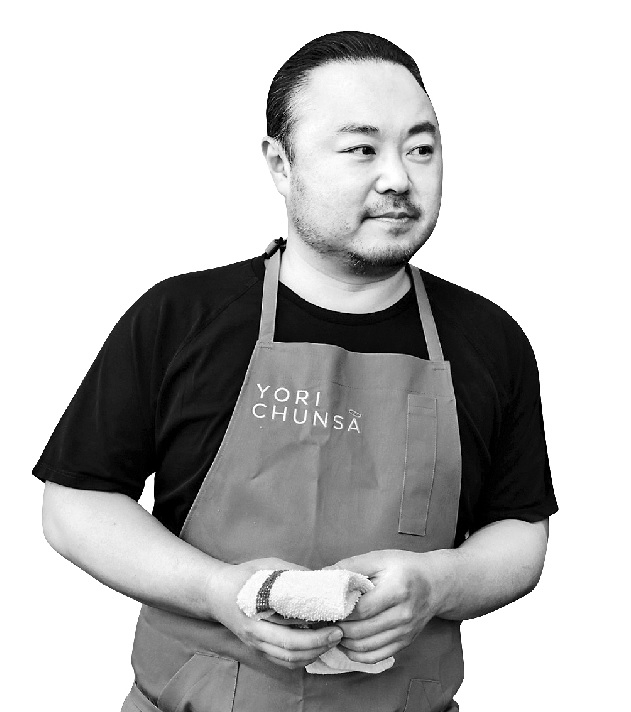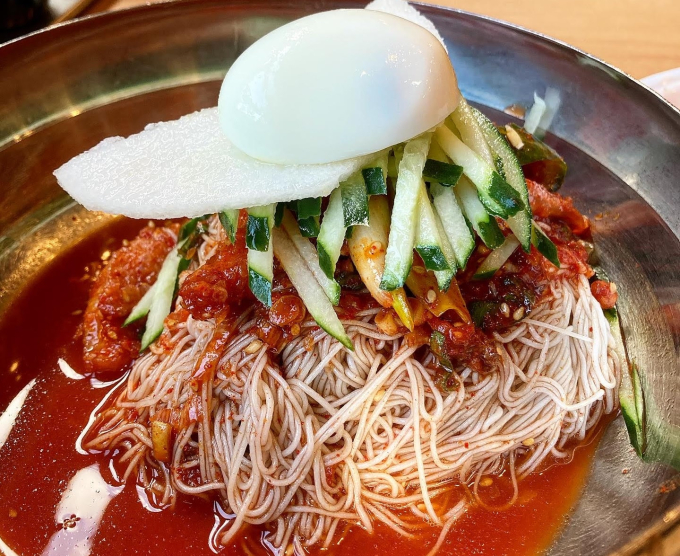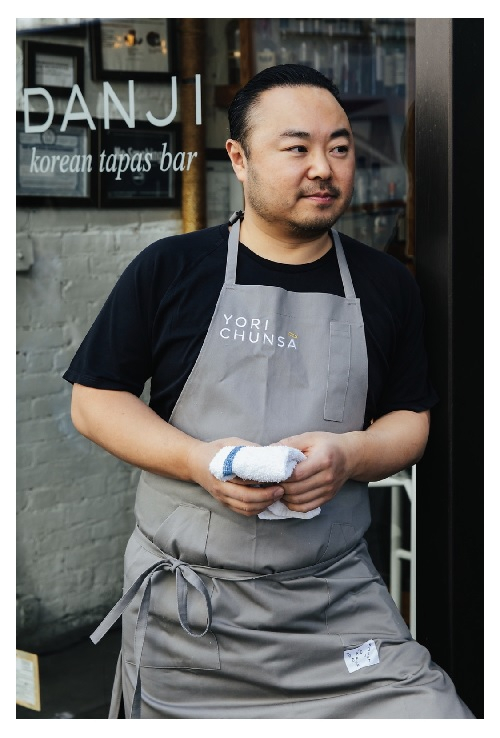Food stories from a chef
Taste memory
Oct 09, 2020 (Gmt+09:00)
5
Min read
Most Read
LG Chem to sell water filter business to Glenwood PE for $692 million


Kyobo Life poised to buy Japan’s SBI Group-owned savings bank


KT&G eyes overseas M&A after rejecting activist fund's offer


StockX in merger talks with Naver’s online reseller Kream


Mirae Asset to be named Korea Post’s core real estate fund operator



I had never been to a street cart before and it was an exciting and intensely sensory experience. A woman was cooking on an enormous makeshift flat-top grill, and a strong, savory, spicy aroma was wafting toward me pulling me forward. She was using an enormous wooden spatula to move around small white oblong-shaped pieces of rice cake and thin triangular pieces of fish cake that were smothered in glistening, bright red gochujang sauce. This was “tteokbokki,” a very popular street food loved by Koreans everywhere.
My cousins paid her 10 Korean won (the equivalent of one penny) and I was given a single toothpick and the chance to spear either a piece of rice cake or one of fish cake. I went for the steaming hot, soft and chewy white rice cake. As I took my first bite, the powerful flavors of the gochujang sauce hit me all at once: spicy, tangy, sweet and salty. The combination of slightly sweet, tender rice cake with the rich, vibrant sauce was the perfect balance. I had never eaten anything like it before and it was almost violently good, the flavors felt like they were punching away at my palate -- in the best way. I was hooked. Tteokbokki was the first food to make it on my “must-eat” list that I later developed for my annual trips to Korea.”
(Excerpt from My Korea: Traditional Flavors, Modern Recipes by Hooni Kim, published by W.W. Norton & Company in April 2020)
As a Korean chef who has lived in New York City for over 40 years I rely heavily on my memory of certain flavors and tastes. By visiting Korea several times every year, I get to experience new ingredients and dishes. And those experiences can act as the inspiration for new dishes at my restaurants.
But the “taste memory” I discuss in my book is different. More than a simple experience, it is created through an emotional connection to a certain place and time. You might remember not only the flavors or texture of the dish but perhaps also the friend you ate with, the ambience of the restaurant, or the familiarity or novelty of the locale. Most importantly, it comes from the intense feeling of excitement, anticipation or comfort you may have felt at the time. This emotional connection is preserved in memory through your senses.
One such memory for me is of Hamheung-style bibim naengmyeon (spicy cold noodles), a dish I craved when hanging out with my cousins every time I visited Korea. The perfectly springy sweet potato noodles doused in spicy, sweet and vibrant gochugaru (dried red pepper powder) sauce was my catnip. As a young American discovering a new frontier of traditional Korean food, I needed a bowl of bibim naengmyeon at least once a week to satiate my addiction.

The restaurant I frequented as a young adult was called Wonjo Hamheung Naengmyeon located in the Yeji-dong neighborhood of Seoul. It was a “mat-jip” (a must-try restaurant or, literally, a tasty house) that had been around for ages. Wonjo become my go-to place for bibim naengmyeon, and I wanted to share its deliciousness with everyone. Sharing tips on which restaurant to go to and what to order is a big part of the joy of discovering a good restaurant. And so, share I did. Wonjo is where I took my first dates and where I went with friends. It is where I took my mom visiting from New York after receiving my first paycheck as an English tutor in Korea.
So many good memories came from that bibim naengmyeon at Wonjo but I hadn’t thought about the place in over 25 years. Yeji-dong is a neighborhood I rarely visit when in Seoul and since returning to Korea more than a decade later I had forgotten all about my old mat-jip. During my more recent trips to Korea, I would get my Hamheung-style naengmyeon fix in the more well-known Ojang-dong neighborhood.
Last week as I started brainstorming for this article, I recalled that “taste memory” of Wonjo’s bibim naengmyeon and decided to seek it out. Would the dish hold up to my memories from 25 years ago? Was it still there? I began to anticipate the trip and was eager to go. I imagined taking my family there where I could share, like a grandpa, stories of my youth as we would devour the noodles covered in that addictive sauce together. Just remembering that perfect ratio of spicy, sweet and tart flavors made my mouth water.
I then quickly looked up Wonjo Hamheung Naengmyeon on the internet to check if it was still there and … was dismayed. I had missed out on tasting Wonjo’s bibim naengmyeon one last time by just a few days. Wonjo closed permanently on September 26, 2020. It had been open since 1953. I regretted not having thought to visit sooner and was saddened by the loss of such an old and respected establishment.
Wonjo will not, of course, be the last of these memory-filled restaurants to close this year. With the whole world in turmoil due to COVID-19 and every country trying to balance safety with economic viability, many businesses, including many beloved restaurants, will struggle to survive. Despite this, I hope you will have the opportunity to safely visit any restaurants that have given you much joy in the past, and not miss your chance as I did. Take some time and see if you have any “taste memories” at restaurants you are still able to visit. If you can, visit them. And visit often. Tell your friends and family. And just maybe you can help save that restaurant from closing due to COVID-19.
Where I eat Hamheung-style bibim naengmyeon now in Seoul:
-Ojangdong Hamheung Naengmyeon (+82 2-2267-9500)
-Ojangdong Heungnamjip (+82 2-2266-0735)
-Ban Ryong San (+82 2-3446-8966)

More to Read
-

-

-
 Travel & LeisureKorean hotels bask in rising foreign visitors; travel agencies in trouble
Travel & LeisureKorean hotels bask in rising foreign visitors; travel agencies in troubleApr 22, 2025 (Gmt+09:00)
-
 Beauty & CosmeticsPackaging rides K-beauty wave: Shares of cosmetics container makers soar
Beauty & CosmeticsPackaging rides K-beauty wave: Shares of cosmetics container makers soarApr 21, 2025 (Gmt+09:00)
-
 Food & BeverageIndia: Tantalizing frontier for K-food’s global ambitions beyond China
Food & BeverageIndia: Tantalizing frontier for K-food’s global ambitions beyond ChinaApr 18, 2025 (Gmt+09:00)
Comment 0
LOG IN


